


THE MAASAI OF TANZANIA
The Maasai migrated south from the Nile Region of North Africa in the fifteenth century before establishing themselves in the Eastern region of Africa in the mid-seventeenth century in what is modern day Kenya and Tanzania. On their migratory route south, the Maasai forcibly displaced tribes that they encountered on their migration south. Maasai warriors resembled a Roman foot soldier, and like the Romans, they were dreaded for their warlike tendency and reputation, They conquered such groups as the Chaga, Sirikwa, Galla, Iltatua, Ndorobo and Kikuyu on their migration south. Arab slave traders probing inland from the coast avoided the Maasai. Early European settlers and explorers feared any encounter with this ‘warrior tribe.’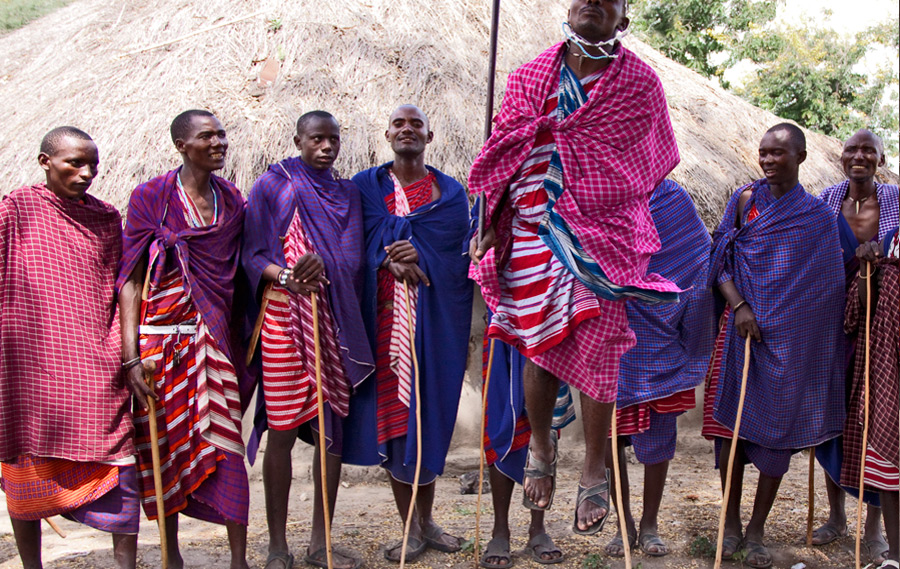
The Maasai are a cattle herding people and derive their entire sustenance from their precious herds. They live under a communal land management system and move their livestock with the seasons. Their diet consists almost entirely of milk and beef, and during the dry season, cow's blood is mixed with milk to stretch food supplies. The herds are quite literally the life-blood of the Maasai. Cattle need range land, but the cattle grazing areas are rapidly diminishing as much of their former lands have become dedicated to National Parks and Reserves to protect wildlife and promote the tourist industry.
A Maasai man's wealth is measured in terms of cattle and children. A herd of 50 cattle is respectable, and the more children the better. A man who has plenty of one but not the other is considered to be poor. A Maasai myth relates that God gave them all the cattle on earth, leading Maasai to the practice of recovering what is rightfully theirs from herds belonging to other tribes. This practice is fortunately now uncommon.
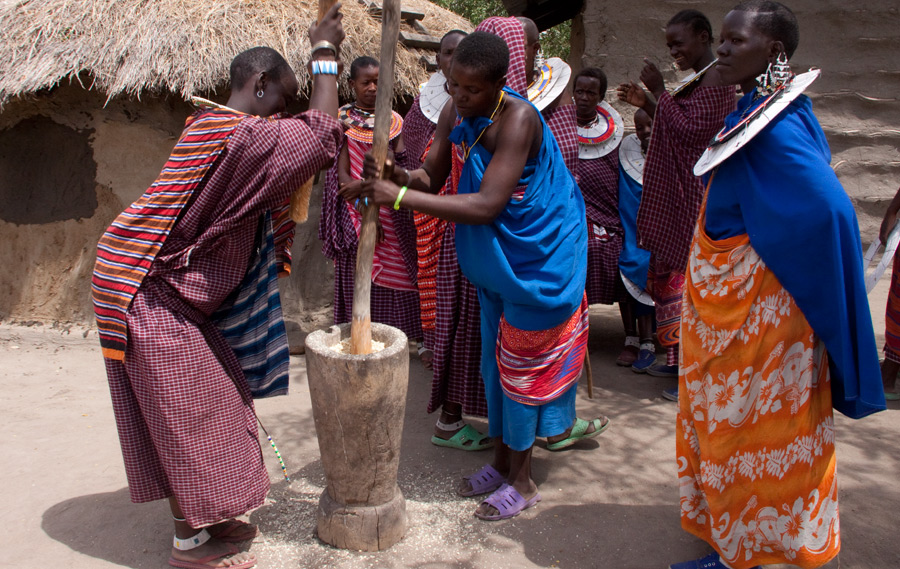
The traditional Maasai house is designed for people who move about the countryside with their cattle and is very impermanent in nature. The enkaji (Maasai word for house, or boma in Swahili), are loaf-shaped and quite small, measuring about 9 feet by 15 feet and standing only 4 and a half feet high. The structural framework is formed of wooden poles fixed directly into the ground and interwoven with a lattice of smaller branches, which is then plastered with a mix of mud, sticks, grass, cow dung and ash. The cow dung ensures that the roof is water-proof. Soil, cow dung and ash are mixed together to form a plaster for inside and outside the walls of the enkaji. The enkaji's mud roof is overlaid with dried grass. Inside the enkaji the family cooks, eats, sleeps, socializes and stores food, wood-fuel, and other household possessions. There is almost no light inside and ventilation is limited. The entrance consists of a short hallway, perhaps 6 feet long, which turns sharply into the main area of the home. Therefore there is almost no daylight entering the house through the open doorway. A wood fire is lit in the center of the main area and is used for cooking. It is kept lit at all times to prevent snakes from entering the home. Basically it is a one room home where personal space and privacy are practically non-existent. Several enkaji or bomas are built within a circular area called a kraal. The fence around the kraal is made of acacia thorns, which prevent lions and other wild animals from attacking the cattle, goats and sheep. It is a man's responsibility to fence the kraal, while women construct the bomas. At night all cows, goats and sheep are brought in from the pasture and placed in an enclosure in the center of the kraal, safe from lions and other wild animals.
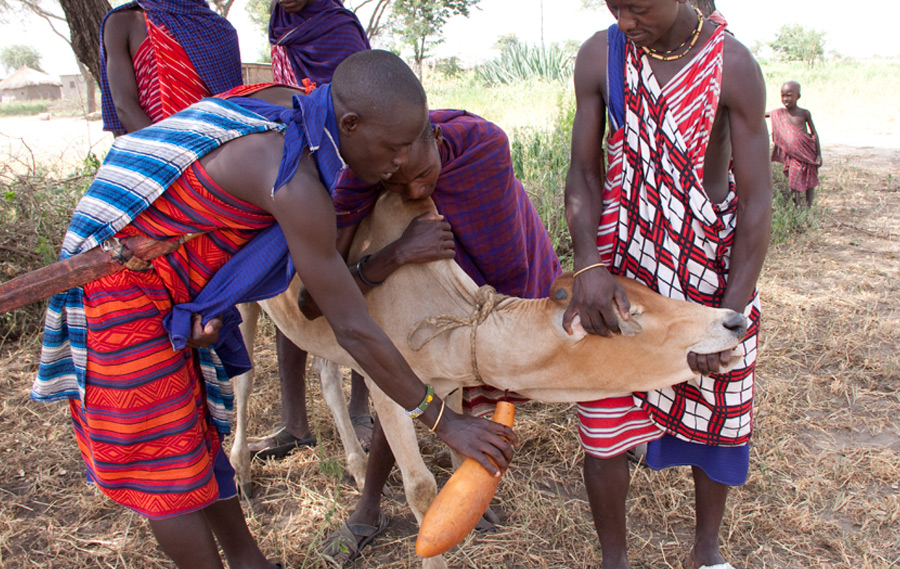
The Man's Role Warriors are in charge of security while young boys are responsible for herding livestock. During the drought season, both warriors and boys assume the responsibility for herding livestock. The male elders are directors and advisors for day-to-day activities. Every morning before livestock leave to graze, an elder who is the head of the family announces the day’s schedule for everyone to follow. A Maasai man may have several wives. A Woman’s Role Women are responsible for constructing the houses and raising the children, as well as hauling water, (sometimes from a great distance), collecting firewood, milking cattle and goats, and cooking for the family. A Maasai woman has more day-to-day jobs compared to her husband. A woman does not own any property. All of the animals and land belong to the husband.
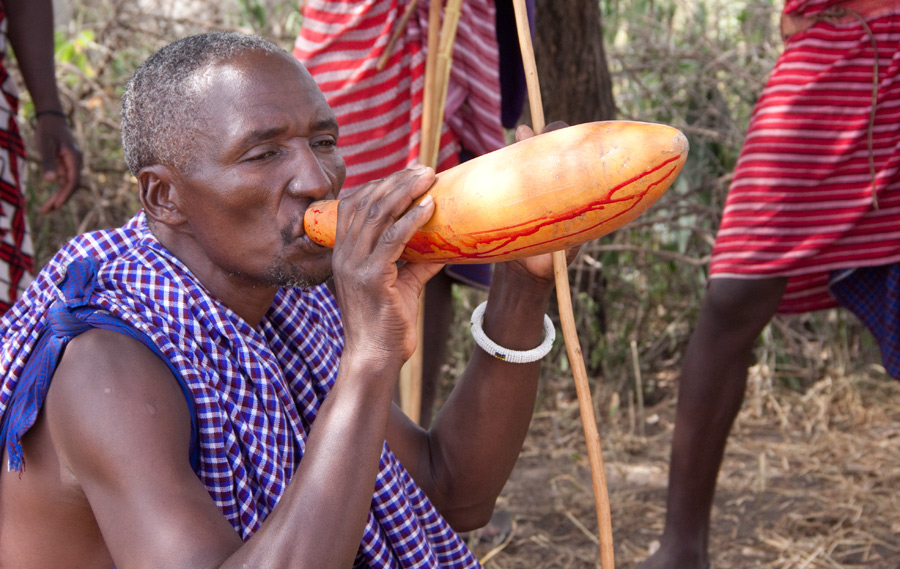
Traditionally, the Maasai rely on meat, milk and blood from cattle for protein and caloric needs. People drink blood on special occasions - even warm blood straight from the animal. More recently, the Maasai have grown dependent on food produced in other agriculture areas such as maize meal (unga wa mahindi), rice, potatoes, cabbage (known to the Maasai as goat leaves), and other produce. The Maasai who live near crop farmers have engaged in cultivation as their primary mode of subsistence. In these areas, plot sizes are generally not large enough to accommodate herds of animals; thus the Maasai are forced to farm. Maasai traditionally frown upon this. Maasai believe that tilling the land for crop farming is a crime against nature. They believe that once you cultivate the land, it is no longer suitable for grazing.
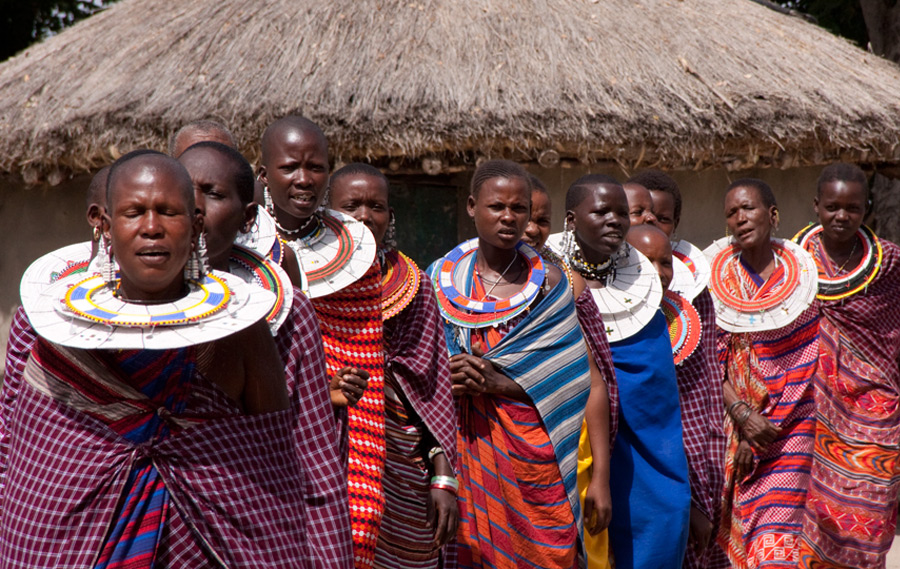
Clothing varies by age, sex, and place. Young men, for instance, wear black for several months following their circumcision. In the 1960s, the Maasai began to replace animal-skin with commercial cotton cloth available in open-air markets. Brightly colored sheets are traditionally worn wrapped around the body, one over each shoulder, then a third over the top. These are typically bright red mixed with blue, green and sometimes yellow. Many Maasai wear simple sandals that were until recently made from cowhides, but are now soled with tire strips. Both men and women wear wooden bracelets. Women regularly weave and bead jewelry into dazzling patterns that plays an essential part in the ornamentation of their body. Although there are variations in the meaning of the color of the beads, some general meanings for a few colors are: white for peace, blue for water, red for warrior and blood and bravery. Beadwork has a long history among the Maasai, who express their identity and position in society through body ornaments. Before contact with Europeans beads were made from local raw materials. White beads were made from clay, shells, ivory or bone. Black and blue beads were made from iron, charcoal, seed, clay, or horn. Red beads came from seeds, gourds, bone, or ivory. Late in the nineteenth century quantities of brightly colored European glass beads arrived in East Africa, and the women began using the new materials with more elaborate color schemes. The piercing and stretching of earlobes is common among the Maasai. Various materials have been used to both pierce and stretch the lobes, including thorns for piercing, twigs, stones, and the cross section of elephant tusks. Fewer and fewer Maasai, particularly boys, follow this custom these days. Women wear various forms of beaded ornaments in both the ear lobes, and smaller piercings at the top of the ear. The removal of the lower two front teeth in early childhood is a practice that has been documented in the Maasai of Kenya and Tanzania.
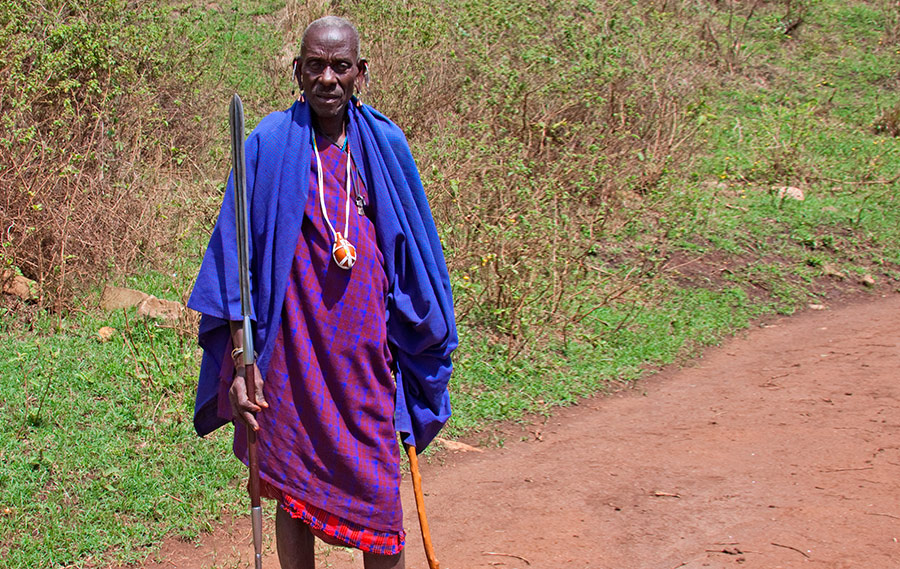 Marriage in Maasai culture is one of their most important traditions. A man is not able to choose whom he is going to marry. If a man’s father has a good friend with a daughter, then the fathers will negotiate between themselves and decide on a date to marry off their son and daughter, without ever consulting them. A week before the celebration a meeting is held which is known in Maasai as “aadung inkishu“, which literally means the splitting of cows. This is where both parties agree on the number of livestock that will be paid by the family of the man to the family of the daughter. This amount differs from family to family. If it is an arrangement between friends it may be 4 or 5 cows, or it may could be as high as 14 or 15. For the ceremony, a bride to be will have her head shaved.
Marriage in Maasai culture is one of their most important traditions. A man is not able to choose whom he is going to marry. If a man’s father has a good friend with a daughter, then the fathers will negotiate between themselves and decide on a date to marry off their son and daughter, without ever consulting them. A week before the celebration a meeting is held which is known in Maasai as “aadung inkishu“, which literally means the splitting of cows. This is where both parties agree on the number of livestock that will be paid by the family of the man to the family of the daughter. This amount differs from family to family. If it is an arrangement between friends it may be 4 or 5 cows, or it may could be as high as 14 or 15. For the ceremony, a bride to be will have her head shaved.
Back to [Enduring Cultures Index]
